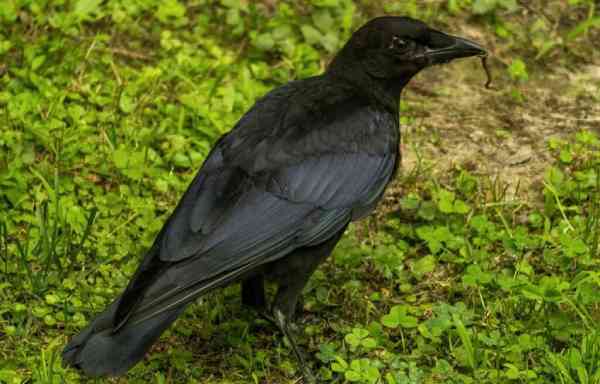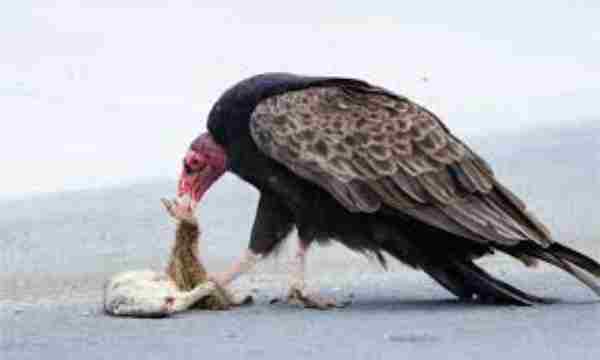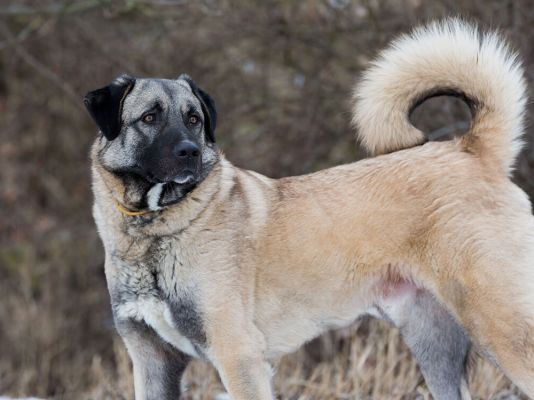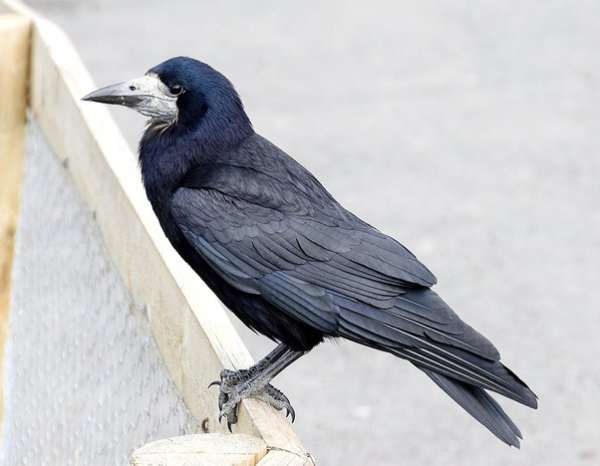In the intricate tapestry of Earth’s ecosystems, nature has woven together a diverse array of predator-prey relationships that both astound and captivate. Among the most enigmatic are the creatures that have developed a taste for crows, those intelligent and adaptable birds that have long captured the human imagination with their dark allure. In this article, we embark on a journey into the intriguing world of “Animals That Eat Crows,” shining a spotlight on the remarkable predators that have evolved to target these corvids.
From the majestic raptors soaring high above the treetops to the stealthy mammals that prowl the shadows, these animals have honed their skills to capture and consume one of the most intelligent birds in the avian kingdom. Join us as we explore the strategies, behaviors, and often complex dynamics that govern these unique predator-prey interactions, shedding light on the delicate balance that exists in the natural world.
The Crow’s Ecological Importance

Crows, often dismissed as mere scavengers or omens of ill fortune, play a significant role in maintaining the ecological balance of their habitats. These intelligent birds are opportunistic foragers, consuming a wide range of food, including insects, carrion, and plant matter. In doing so, they help control pest populations and aid in the decomposition of dead animals, which contributes to nutrient cycling in ecosystems.
Additionally, crows are known to cache food, inadvertently assisting in reforestation by burying seeds and promoting the growth of new plants. Their distinctive cawing calls can also alert other wildlife to potential dangers, serving as an auditory sentinel in the wilderness. Thus, crows are ecological custodians that deserve recognition for their multifaceted contributions to the natural world.
Cannibalism Among Crows
While it may come as a surprise, cannibalism is not uncommon among crows. In certain situations, such as during harsh winters or when resources are scarce, crows may resort to cannibalistic behavior. This behavior is often a survival strategy, allowing stronger individuals to feed on weaker or deceased members of their own species. While cannibalism may seem macabre, it plays a role in regulating crow populations and ensuring the survival of the fittest. It’s a reminder that the natural world is filled with complexities and adaptations that are sometimes harsh but essential for the perpetuation of species.
Large Raptors:

Large raptors, such as eagles, owls, and hawks, are formidable hunters with keen eyesight and powerful talons. While their primary prey often consists of smaller mammals, birds, and sometimes fish, they may occasionally target crows. Crows are not an easy catch for these skilled predators due to their intelligence and agility.
However, if a crow becomes injured, sick, or finds itself in a vulnerable situation, it can become a target for these raptors. In such instances, the raptors may seize the opportunity to capture and consume a crow. Despite their infrequent interactions with crows, these aerial hunters play a vital role in maintaining ecological balance and regulating bird populations.
Larger Carnivores:

Some larger carnivorous mammals, including coyotes and red foxes, are opportunistic feeders with a diverse diet. While their primary food sources often include small mammals, birds, and carrion, they may occasionally scavenge on the remains of crows. It’s important to note that crows are agile and vigilant birds, and interactions with these mammals are relatively rare.
Nevertheless, in situations where crows are already deceased or incapacitated, these scavengers may consume them. These larger carnivores help recycle nutrients in ecosystems by consuming carrion, playing a crucial role in nature’s cleanup crew.
Carnivorous Birds:

Certain scavenging birds, like vultures and magpies, have evolved to feed on carrion. While their primary diets consist of deceased animals and other organic matter, they may occasionally come across dead crows. Vultures, in particular, are known for their keen sense of smell, which helps them locate carrion from great distances.
Magpies, on the other hand, are opportunistic feeders and may scavenge on various food sources, including the remains of crows. These avian scavengers contribute to the decomposition process by efficiently recycling nutrients from deceased animals back into the ecosystem.
Domesticated Dogs and Cats:

In urban or suburban areas, domesticated dogs and cats, while not natural predators of crows, may occasionally prey on them. Crows are highly adaptable birds that can thrive in various environments, including cities and towns. When injured, sick, or vulnerable crows are encountered by domestic pets, these animals may exhibit predatory behavior.
Domestic dogs, with their strong jaws and hunting instincts, might chase or capture a crow if given the opportunity. Similarly, cats, known for their hunting prowess, may stalk and attempt to catch crows, especially when young crows are learning to fly. While these interactions are infrequent and not a significant part of domestic pets’ diets, they highlight the complexity of interspecies interactions in human-dominated landscapes.
Mutualistic Relationships with Crows
Crows are known for forming intriguing mutualistic relationships with various species. For example, they have been observed collaborating with other birds, such as hawks, to mob and drive away predators that pose a threat to both parties. Crows also engage in mutualistic interactions with humans in some contexts.
In urban environments, crows often scavenge food scraps from human settlements, and in return, they may alert humans to the presence of predators or other potential dangers. These symbiotic relationships highlight the adaptability and intelligence of crows, showcasing their ability to navigate a variety of environments and establish connections that benefit multiple species.
Conservation and Ethical Considerations
As we explore the intricate dynamics of crows and their interactions with the natural world, it’s crucial to consider the ethical implications of our interactions with these birds. While crows are adaptable and resilient, they can face challenges in urban environments, including habitat loss and exposure to pollutants.
Conservation efforts should focus on preserving the habitats and resources that support crow populations while also addressing potential conflicts between crows and humans. Ethical considerations also extend to how we view and interact with crows, emphasizing the need for coexistence and understanding rather than fear or persecution.
Fascinating Crow Adaptations
Crows are masterful examples of adaptation in the avian world. Their remarkable intelligence and problem-solving abilities have been widely studied and admired. These birds have been known to use tools, such as sticks or leaves, to extract insects from crevices, demonstrating a level of cognitive complexity that rivals some primates. Additionally, their striking black plumage and iridescent feathers serve not only as a form of camouflage but also as a means of communication within their social groups.
Crow calls are diverse and intricate, allowing for a range of vocalizations that convey information about threats, food sources, and more. Their ability to thrive in diverse environments, from bustling cities to remote forests, showcases their adaptability and resilience in the face of changing landscapes. Crow adaptations continue to intrigue researchers and enthusiasts alike, shedding light on the evolutionary wonders of these birds.
Final Words
In this exploration of the world of crows, we’ve uncovered the multifaceted roles they play in ecosystems, their intriguing behaviors, their dynamic relationships with other species, and the importance of ethical considerations in our interactions with them. Crows, with their intelligence and adaptability, continue to captivate our imagination and offer valuable insights into the complexities of the natural world. As we observe and appreciate these remarkable birds, let us also embrace the responsibility of coexisting harmoniously with the diverse array of life that surrounds us.
Reference:
- https://www.pbs.org/wnet/nature/a-murder-of-crows-crow-facts/5965/
- https://www.kpcnews.com/columnists/neil_case/kpcnews/article_fd589d4e-2399-5d59-84ba-0ccbeb7ae3fd.html
- https://wdfw.wa.gov/sites/default/files/publications/00611/wdfw00611.pdf
A motivated philosophy graduate and student of wildlife conservation with a deep interest in human-wildlife relationships, including wildlife communication, environmental education, and conservation anthropology. Offers strong interpersonal, research, writing, and creativity skills.










